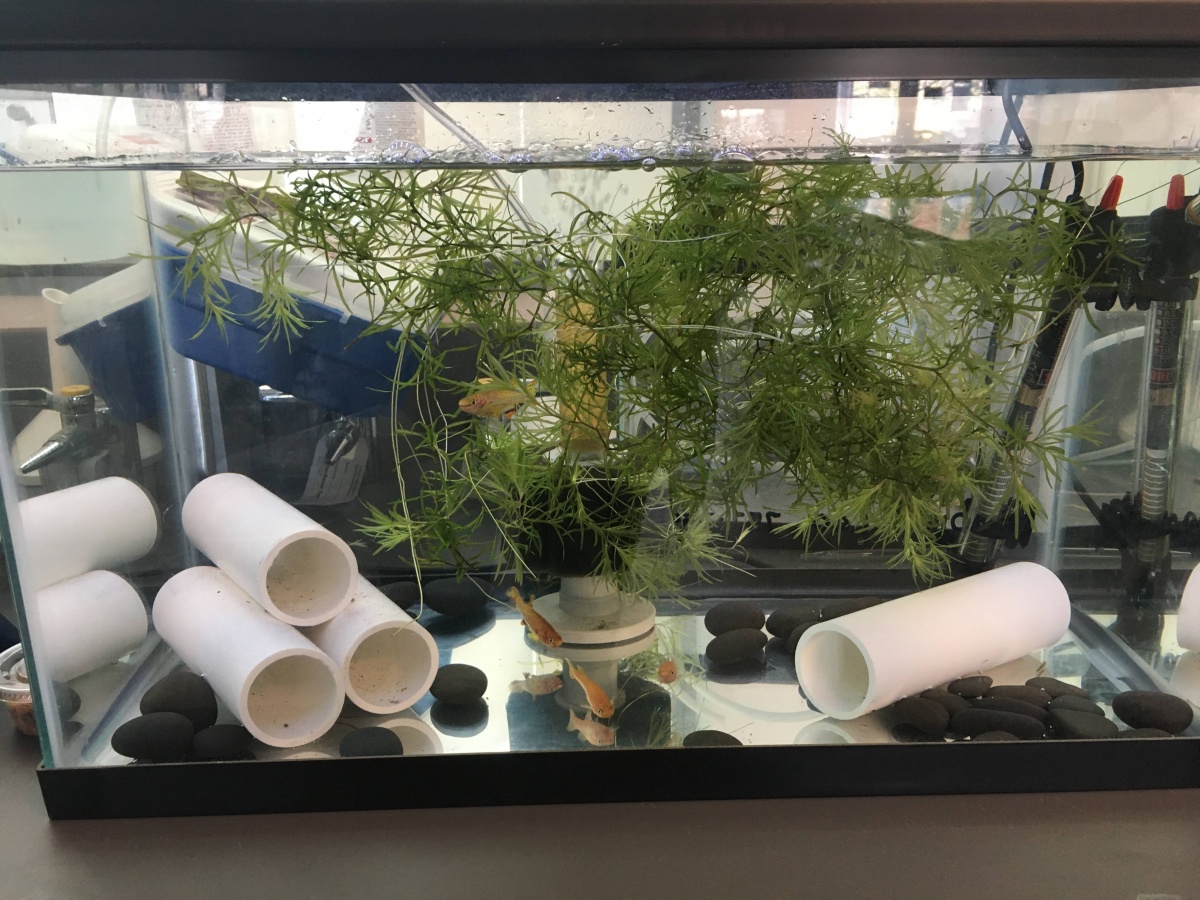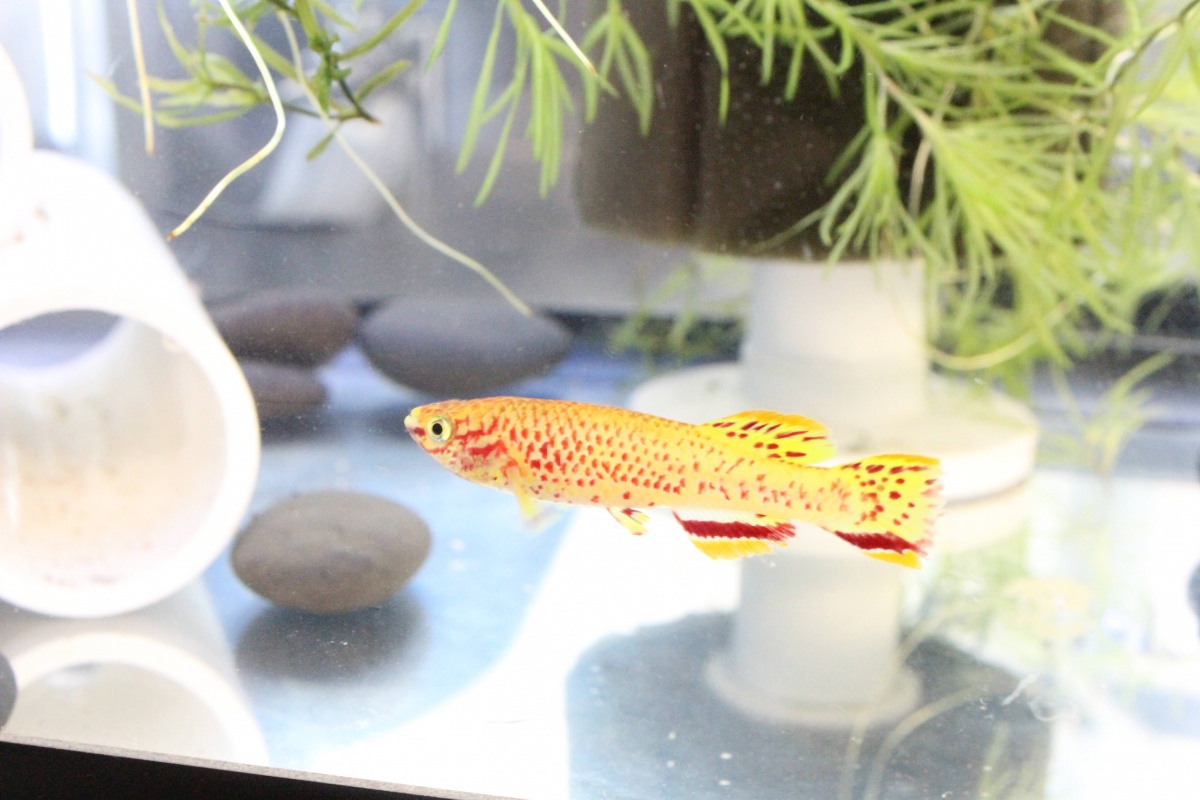Alaecreaturae
Aquarium Advice Apprentice
Hi all, I thought I would start an ongoing thread about the project I am conducting this spring.
This is for an animal behavior course, where I will pick a study animal and catalog its behaviors with ethograms. Once I've done that I will use the data to make diagrams, graphs, charts, etc. to see the pattern. Finally, I'll introduce a variable and see how they react- I have not chosen what I am changing yet, so feel free to make humane suggestions.
My study animals are four Fundulopanchax gardneri (Gardneri killifish) from a breeder in Pennsylvania. We limit their interaction with people to make the environment as natural as possible. There are 2 males and two females, and they are quite interesting creatures.
Some of my main questions are:
What is the most frequent behavior; what behaviors follow, and what percentage of the time? The goal of this project is not to determine the "why" but the what. For example, one of your goldfish may be picking at an object and moving it about. You could say, "Oh, my goldfish is playing!" Instead, you should say, "My goldfish is picking at an object," or even simpler, "My goldfish is touching an object with its mouth repeatedly". As pet owners, we typically assign personality and reason to behavior. I mean, how can we not? Sure, maybe the fish is playing, but you could not possibly confirm it until you do the research to prove it! That is why I am doing this
Here is our setup:

10 gallon with a simple layout!
I got some pipes from home depot and cleaned them up real nice. I chose them to increase water flow, and my fish at home love them! The rocks are some decorative ones that I boiled for several hours. They are there mainly to keep the pipes in place. My lab partner brought the equipment in and the floating plants (I have no idea what they are).
We will be starting our initial observations fairly soon, and I will make an update as soon as I have the data.

Male F.gardneri resting.
This is for an animal behavior course, where I will pick a study animal and catalog its behaviors with ethograms. Once I've done that I will use the data to make diagrams, graphs, charts, etc. to see the pattern. Finally, I'll introduce a variable and see how they react- I have not chosen what I am changing yet, so feel free to make humane suggestions.
My study animals are four Fundulopanchax gardneri (Gardneri killifish) from a breeder in Pennsylvania. We limit their interaction with people to make the environment as natural as possible. There are 2 males and two females, and they are quite interesting creatures.
Some of my main questions are:
What is the most frequent behavior; what behaviors follow, and what percentage of the time? The goal of this project is not to determine the "why" but the what. For example, one of your goldfish may be picking at an object and moving it about. You could say, "Oh, my goldfish is playing!" Instead, you should say, "My goldfish is picking at an object," or even simpler, "My goldfish is touching an object with its mouth repeatedly". As pet owners, we typically assign personality and reason to behavior. I mean, how can we not? Sure, maybe the fish is playing, but you could not possibly confirm it until you do the research to prove it! That is why I am doing this

Here is our setup:

10 gallon with a simple layout!
I got some pipes from home depot and cleaned them up real nice. I chose them to increase water flow, and my fish at home love them! The rocks are some decorative ones that I boiled for several hours. They are there mainly to keep the pipes in place. My lab partner brought the equipment in and the floating plants (I have no idea what they are).
We will be starting our initial observations fairly soon, and I will make an update as soon as I have the data.


Male F.gardneri resting.







